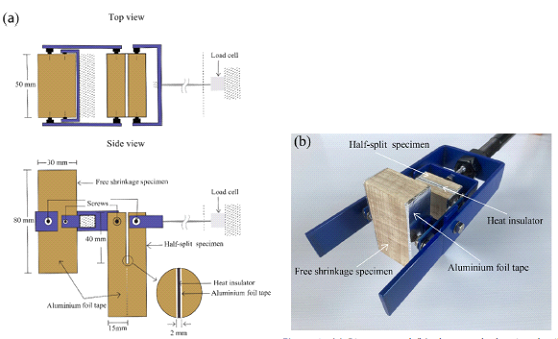Internal stress development within wood during drying: regime and kinetics
Jaipet Tomada , Satjapan Leelatanona , Sataporn Jantaweeb , Kuntida Srisucharta , and Nirundorn Matan
Abstract:
Internal stress (IS) development in juvenile and mature rubberwood during drying has been studied using an online measurement of a restoring force (RF) required to restrain a halfsplit rectangular wood specimen. According to an abrupt change in the restoring force rate, the evolution of IS can be divided into four distinct regimes, i.e., (i) zero IS, (ii) accelerating IS, (iii) reversing IS and (iv) decelerating IS. In stage I, the wood moisture content (MC) is still above fiber saturation point (FSP) with no drying shrinkage. In stage II, the negative RF constantly accelerates. IS mainly develops due to drying shrinkage with the activation energy of 19 kJ/mol. In stage III, the negative RF sharply decelerates and later reverses to the positive value. This regime takes place as the dried zone moves inwards and ends when there is no wet zone left. The stress reversal phenomenon having the activation energy of 36 kJ/mol contains two negative maxima, which occur faster in mature wood than in juvenile wood. Possible creep relaxation due to shear deformation of hemicellulose/lignin matrix between the cellulose fibrils is discussed. Finally, the positive RF decelerates in stage IV with the RF rate gradually declining and remaining at zero up until the end of drying. The corresponding activation energy of stage IV is 52 kJ/mol for both juvenile and mature rubberwood.
https://doi.org/10.1080/07373937.2022.2084750


